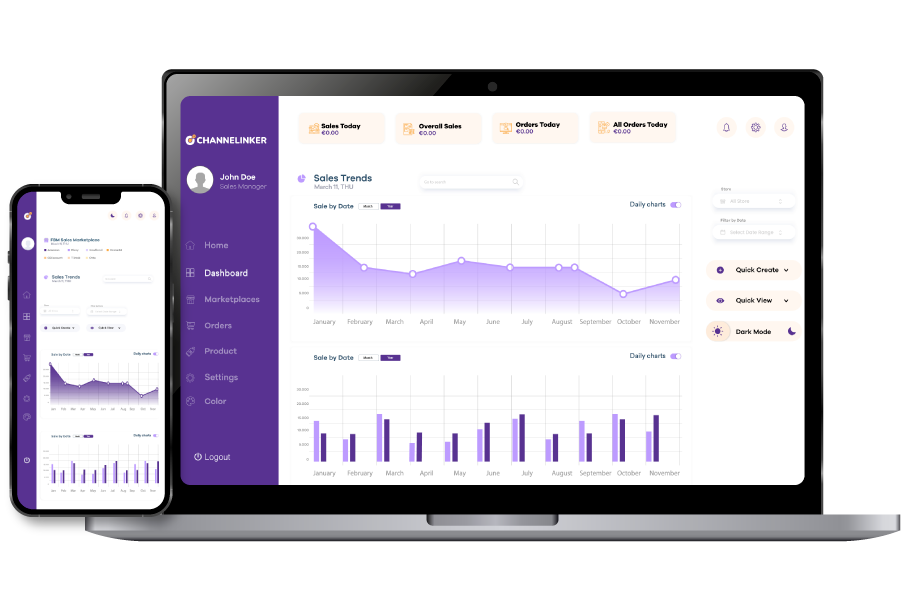Free Cash Flow: What it is & How to Calculate

Free Cash Flow (FCF) is a key financial indicator used to understand a company’s financial health and its capacity to generate cash after paying for operational and capital expenditures. “It helps tell us how much cash is left for reinvestment, paying down debt, returning value to shareholders or grabbing growth opportunities.” That’s why business owners, financial analysts, and investors need to understand FCF and how to calculate it. This guide explains FCF, its formula, types, and importance in financial modeling and analysis.
Free Cash Flow Formula
Free Cash Flow has a simple formula that can be written as follows:
FCF = Operating Cash Flow – Capex
Here’s what all of those pieces mean:
Cash from Operating Activities (CFO): The cash derived from the firm’s primary business operations, located in the cash flow statement.
Capital Expenditures (CapEx): Which includes the money used by a company to acquire, upgrade, and maintain physical assets such as property, buildings, technology, and equipment that are pivotal to maintain and expand its operations.
For instance, if a company has an operating cash flow of $500,000 and capital expenditures of $150,000 then its Free Cash Flow is:
FCF = $500,000 – $150,000 = $350,000
This $350,000 is the cash available for non-operational uses like dividends or debt repayments.
Types of Free Cash Flow
There are two main types of Free Cash Flow: Free Cash Flow to the Firm (FCFF) and Free Cash Flow to Equity (FCFE).
- Free Cash Flow to the Firm (FCFF): Also known as unlevered Free Cash Flow, FCFF measures the cash available to all capital providers, including both debt and equity holders. It does not account for interest payments, making it independent of a company’s capital structure.
- Formula: FCFF = EBIT (1 – Tax Rate) + Depreciation – CapEx – Change in Working Capital
- Free Cash Flow to Equity (FCFE): Known as levered Free Cash Flow, FCFE represents the cash available to equity shareholders after meeting all financial obligations, such as interest payments and debt repayments.
- Formula: FCFE = Cash from Operations – CapEx + Net Debt Issued (Repaid)
How to Derive the Free Cash Flow Formula?
The FCF formula is derived from components of the financial statements — mainly the cash flow statement along with the income statement:
- Begin with Cash from Operations: Start with net income and add back any non-cash expenses (depreciation, amortization, etc.) and adjustments to working capital.
- Capital Expenditures: These are expenses to maintain or grow the company’s operational capacity.
Expanded Formula FCF = Net Income + Non-Cash Expenses – Changes in Working Capital – CapEx
This derivation bridges FCF with profitability as well as operational cash generation abilities, so that it serves as a reliable signal of financial health.
Download the FCF Template
For ease of calculation, a pre-built Free Cash Flow (FCF) template can be used. World-renowned financial platforms like the Corporate Finance Institute provide downloadable FCF templates. Using the templates, users enter financial data from company statements, and the Excel template calculates FCF for them, which saves time and reduces errors.
Here you can check Channelinker’s Free Cash Flow template:
https://docs.google.com/spreadsheets/d/1X93TyWW4iZ8hFszKqVjGJNIMULRhEfVoR8B8BRFsUOQ/edit?usp=sharing
Importance of Free Cash Flow
Free Cash Flow is a critical metric for several reasons:
- Indicator of Financial Health: FCF reveals whether a company generates enough cash to fund its operations and investments without relying on external financing.
- Basis for Valuation: Analysts use FCF in discounted cash flow (DCF) models to estimate a company’s intrinsic value.
- Dividends and Share Buybacks: A positive FCF allows companies to return value to shareholders through dividends or share repurchase programs.
- Flexibility for Growth: Companies with strong FCF can reinvest in growth initiatives like acquisitions, research and development, or market expansion.
- Debt Management: FCF indicates a company’s ability to service debt and reduce leverage, improving financial stability.
- Investor Confidence: Consistent and growing FCF signals stability and resilience, attracting investors.
Levered and Unlevered Free Cash Flow
The distinction between levered and unlevered Free Cash Flow lies in how debt is accounted for:
- Unlevered Free Cash Flow (FCFF):
- Represents cash flow before accounting for interest payments or financial obligations.
- Useful for evaluating a company’s core profitability without considering its capital structure.
- Commonly used in mergers and acquisitions to value a company’s enterprise value (EV).
- Levered Free Cash Flow (FCFE):
- Reflects the cash available to equity holders after accounting for all financial obligations, including debt payments.
- Highlights a company’s ability to generate shareholder value.
- Often used to determine the equity value of a business.
FCF Formula in Financial Modeling, Analysis, and Valuation
Free Cash Flow is a cornerstone in financial modeling and valuation. Analysts and investors rely on FCF to:
- Build Discounted Cash Flow (DCF) Models:
- FCF serves as the foundation for DCF models, where future FCFs are projected and discounted to estimate the present value of a business.
- The formula aligns with a company’s long-term financial performance and growth potential.
- Conduct Sensitivity Analysis:
- Variations in FCF assumptions, such as changes in CapEx or working capital, are tested to understand their impact on valuation.
- Compare Peer Companies:
- FCF is a benchmark for evaluating the financial efficiency of companies within the same industry.
- Assess Profitability and Scalability:
- FCF reflects a company’s ability to scale operations while maintaining profitability.
Limitations Associated with Free Cash Flow
While Free Cash Flow is a valuable metric, it has certain limitations:
- Volatility: FCF can fluctuate due to changes in working capital, CapEx, or seasonal factors, making short-term trends harder to interpret.
- Non-Standardized Calculations: Different companies may include or exclude specific items in their FCF calculations, complicating comparisons.
- Subjectivity in CapEx Classification: Distinguishing between maintenance CapEx and growth CapEx can be subjective and affect the accuracy of FCF.
- Exclusion of Non-Cash Considerations: FCF does not account for non-cash financial factors such as stock-based compensation or amortization of intangibles.
- Industry-Specific Variations: The importance of FCF varies by industry; for example, capital-intensive businesses rely heavily on FCF, while others may prioritize different metrics.


